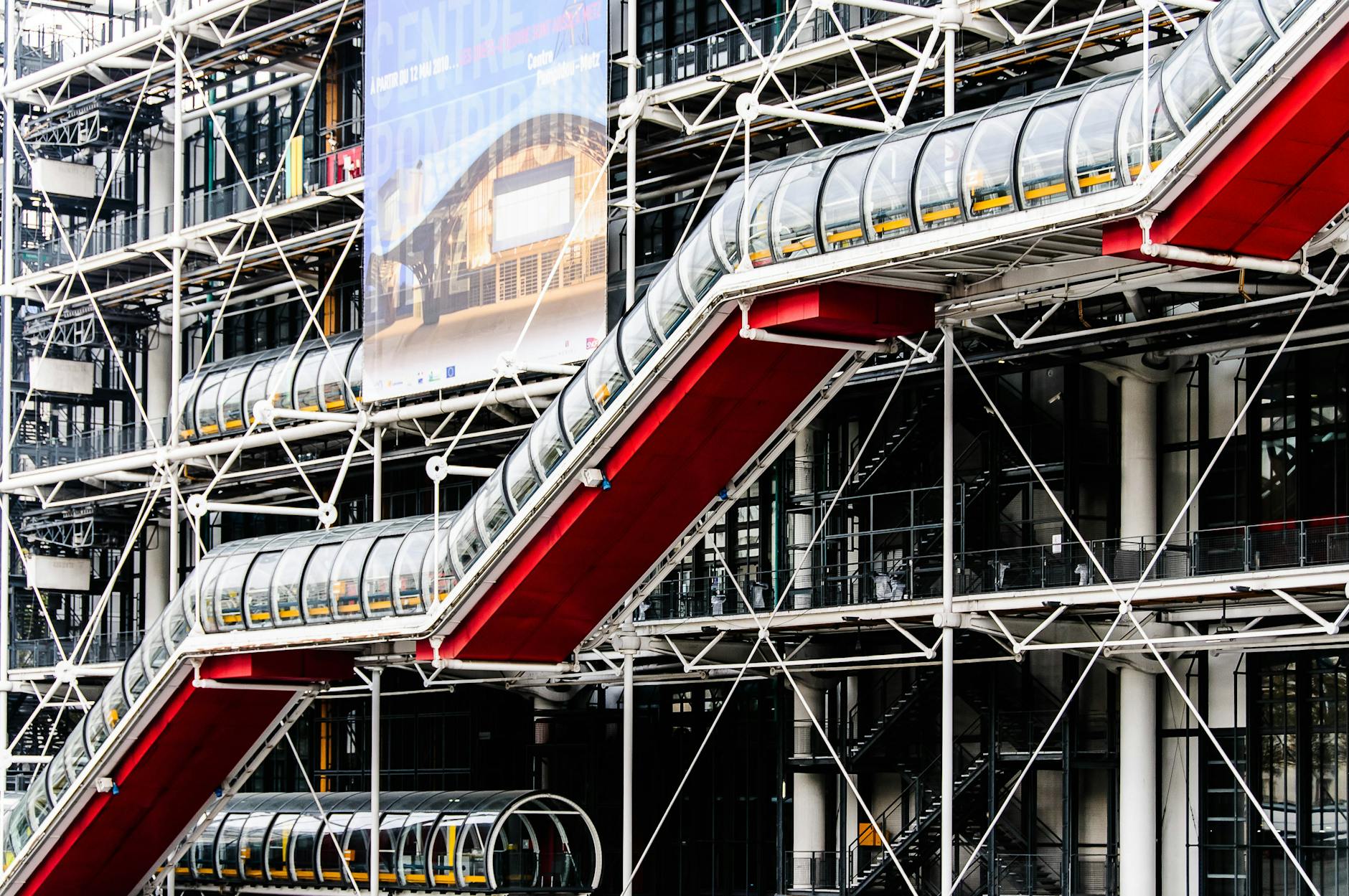Are You Choosing Eco-Friendly Audio Equipment for Your Events in Australia?

Eco-Friendly Materials
Exploring eco-friendly materials is critical when aiming for a sustainable and efficient facility. While sustainability fuels the drive in modern facility management, it’s also about making informed choices that benefit our environment and operations. For instance, when considering materials for office upgrades, options are not limited to acoustic panels or standard equipment, like guitars and basses, but extend to cutting-edge digital innovations such as a motorised projector screen.
Sustainable materials are derived from practices that minimise environmental impact. In Melbourne, initiatives like those seen at the Royal Botanic Gardens reinforce the importance of incorporating eco-friendly materials that align with broader conservation goals. By choosing materials with low energy consumption during production, facilities can silently contribute to preserving nature's harmony—a nod to the vibrant ecosystems found within the gardens themselves.
Furthermore, integrating a hearing loop system highlights the dual benefits of inclusivity and sustainability. Such systems assist hearing-impaired staff and embody environmentally conscious engineering by utilising materials that are both recyclable and durable.
To implement these systems, consider choosing alternatives that hold certifications whether it’s Green Star or equivalent, ensuring a product's eco-friendliness aligns with global standards. By carefully examining these certifications and focusing on the sustainability of the products used, facility managers can make impactful decisions that reverberate far beyond the immediate office space, creating a lasting positive effect on both the environment and the workplace.
Energy Efficiency
Power Consumption Rates
In my role as a Facilities Manager here in Melbourne, particularly with the dynamic demands of our corporate environment, I’ve found energy efficiency to be a cornerstone of sustainable practices. Optimising power consumption rates is crucial for everyone who wishes to integrate eco-friendliness into their workplaces. When considering gadgets like a recording microphone, it is essential to evaluate the power usage compared to its functionality to ensure it supports your sustainability goals without sacrificing performance.
Renewable Energy Sources
Embracing renewable energy sources is a forward-thinking strategy for reducing carbon footprints. Implementing solar panels on office spaces or sourcing energy from wind farms can transform how your organisation views energy consumption. It's not merely about cost-saving, but about contributing to a larger environmental solution—something that resonates strongly with efforts in local initiatives like the Royal Botanic Gardens' sustainability programs.
Battery Efficiency
Another vital area in energy efficiency is the focus on battery technology. Selecting equipment with long-lasting battery life not only reduces the frequency of replacements but also minimises electronic waste. When it comes to devices such as monitors for video conferencing, opting for models with energy-efficient display technology and robust battery performance supports a cleaner and greener office environment. By prioritising these aspects, we make strides towards conserving energy and preserving our planet for future generations.
Acoustic Quality
Balancing Quality and Eco-Friendliness
Enhancing acoustic quality while maintaining eco-friendliness is a prime focus, especially considering Melbourne's rich heritage of sustainable practices. Many of us, inspired by the eco-friendly atmosphere at sustainable markets at Queen Victoria Market, strive to integrate sustainable materials and techniques into our acoustic solutions. We have acoustic panels made from recycled fibres, which ensure both sound control and reduced environmental impact. The universal remote solutions combine technology with conservation, allowing for efficient control over multiple devices, reducing energy usage and clutter. This synergy enables facilities like those I manage to maintain acoustic excellence without compromising on environmental responsibility.
Advanced Sound Technology
Exploring advanced sound technology offers a plethora of benefits. Facilities that require precise sound quality can leverage musical equipment that excels in delivering superior audio performance. With innovations such as adaptive sound control and noise-cancellation features, we're able to provide dynamic acoustic solutions that adjust to various ambient conditions. The integration of such advanced technology not only improves auditory experiences but also aligns with our broader mission to support sustainable practices in corporate settings.
Room Adaptability Features
Room adaptability features are vital for creating versatile and functional spaces. Acoustic solutions with flexible features allow for seamless transitions between different room configurations and uses. For instance, adjustable sound absorption panels can cater to varying acoustic needs, whether it's a quiet meeting space or an open conference area. By employing adaptable solutions, facilities can ensure consistent sound quality while remaining mindful of sustainability and energy efficiency goals.
Practical Implementation
Installation Techniques
When considering the installation of new audio equipment, like loudspeakers and acoustic panels, in your office environment, it’s essential to focus on techniques that ensure sustainability and efficiency. Prioritising sustainable practices during installation not only supports eco-friendly initiatives but also enhances long-term efficacy. For example, employing modular systems can allow for easy upgrades and replacements without generating unnecessary waste. Professional installation services often offer solutions that reduce installation time, limiting any disturbance to daily operations.
Maintenance Practices
Routine maintenance is key to maximizing the lifespan and functionality of your acoustic and audio systems. Regular checks and timely servicing can prevent minor issues from escalating into significant disruptions. It's advisable to create a maintenance calendar that incorporates inspections and cleaning routines. Opting for non-toxic cleaning supplies aligns with sustainable practices, ensuring minimal environmental impact. Particularly for acoustic panels, it's crucial to use gentle methods to preserve their surface and sound-absorbing properties.
Supplier Demonstrations
Understanding the comprehensive capabilities of your equipment is critical, which is why arranging supplier demonstrations is invaluable. Direct interaction with service providers can offer insights into the latest innovations and best practices. These demonstrations allow you to see firsthand the benefits of various products, making it easier to choose solutions that align with your environmental and operational goals. Visiting events and exhibitions similar to industry conferences in Melbourne can provide opportunities to explore a broader range of options, fostering a more informed and empowered decision-making process.
Overcoming Challenges: Sustainable Integration
Harmonizing with Pre-existing Systems
Incorporating sustainable practices into existing systems can feel like fitting pieces into a complex puzzle. From my vantage point at the Royal Botanic Gardens, it's about weaving the old with the new in a symbiotic dance. It's crucial to assess the compatibility of new eco-friendly solutions with current setups. For instance, replacing parts with sound system replacement parts ensures minimal waste while maintaining efficiency. Consulting with professionals familiar with both realms can bridge gaps, offering a seamless transition.
Catering to Varied Requirements
With the diversity of settings, from the sprawling expanse of Melbourne Zoo's conservation programs to intimate sustainable markets at Queen Victoria Market, meeting diverse needs requires a bespoke approach. Identifying the unique requirements of each environment allows for a tailored strategy. Materials should be chosen with care, addressing both functional and aesthetic considerations. Employing experts who understand eco-audio solutions ensures that installations resonate well across varied applications.
Ensuring Smooth Operations
While change is fundamental, avoiding operational disruptions remains paramount. The goal is to align new implementations with existing workflows, causing minimal interruptions. Incorporating strategies like staggered installations or temporary setups lets operations flow smoothly. It's about making sure changes are as seamless as the serene landscapes of our beloved city. Thus, incorporating new smarter energy solutions or advanced technology should feel more like an evolution rather than a challenge.


